Cellular Concrete Projects
-
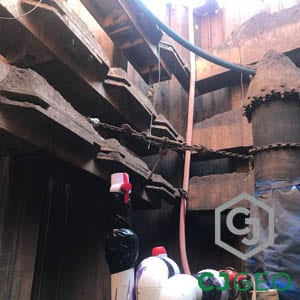
Tampa Microtunnel
THE JOB As part of a large design-build utility rehabilitation and capacity improvement project, ...
-

Microtunnel Annular Space Grouting
The Job This microtunnel annular space grouting project is part of a massive interstate expansion...
-

Communication Jack & Bore Grouting
The Job The Sandston area, just outside of Richmond, Virginia, is at the crossroads of major nort...
-
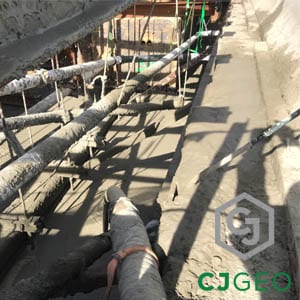
MD 355 Lightweight Fill
THE JOB As part of the construction of a pedestrian underpass at the Medical Center WMATA station...
-

Fullerton Reservoir Annular Space Grouting
THE JOB This reservoir annular space grouting project is located in Baltimore, Maryland. As part ...
-

1 Mile 36″ Waterline Abandonment
THE JOB CSX crews were surfacing the mainline track in Baltimore when the tamping equipment struc...
-
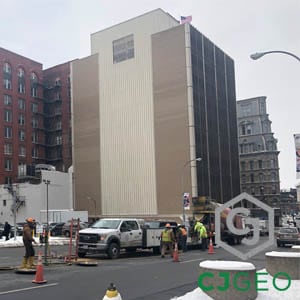
Power Conduit Abandonment
THE JOB This power conduit abandonment project was part of a new line installation project. A uti...
-

Emergency Pipe Abandonment
THE JOB The pavement of a rural road outside of Williamsburg, Virginia collapsed suddenly. T...
-

Maryland Annular Space Grouting
THE JOB A jack & bore contractor performed a 200LF, 54″ bore under an arterial highway. After...
-
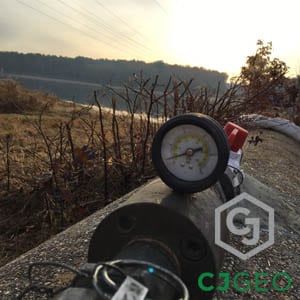
Virginia Annular Space Grouting
THE JOB 1100 feet of pile-supported 34″ PCCP water line over a drinking water reservoir was being...
-

I-66 Annular Space Grouting
The Job During the widening of Interstate 66 near the interchange with US-15, nine new culverts w...
-

Stone Arch Lightweight Backfill
The Job This stone arch lightweight backfill project is located in Somerset, New Jersey. The ston...
-

Upham Brook Annular Space Grouting
The Job This Upham Brook annular space grouting project is located in central Virginia. A sewer t...
-

MSE Wall Lightweight Backfill
The Job This MSE wall lightweight backfill project is located near Richmond, Virginia. The geotec...
-

Sedimentation Tank Abandonment
The Job This sedimentation tank abandonment project is located in Stamford, Connecticut. As part ...
-
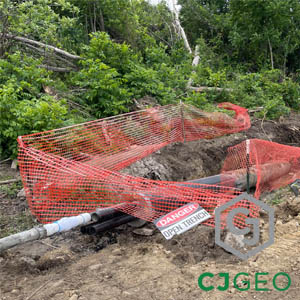
NY Thruway HDD Annular Space Grouting
The Job This HDD annular space grouting project is east of Buffalo, New York, under the New York ...
-

Retaining Wall Lightweight Backfill
The Job This retaining wall lightweight backfill project is located in Arlington, Virginia. Arlin...
-

250000 Gallon Oil Tank Abandonment
The Job This oil tank abandonment project is located in the nation’s capitol, Washington, D...
-

DeRuyter Reservoir Outfall Abandonment
The Job This outfall abandonment project is located in Upstate New York. The DeRuyter Reservoir, ...
-
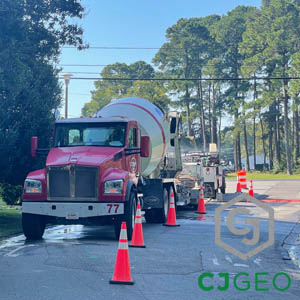
HRSD 24″ Forcemain Abandonment
The Job HRSD‘s Virginia Beach Boulevard Forcemain Replacement project installed more than a...
-

Precast Lagging Wall Lateral Load Reduction
The Job This load reduction backfill work as associated with the replacement of Scaife Hall, at C...
-

Lightweight Stem Wall Backfill
The Job This lightweight stem wall backfill work is part of the construction of a new academic bu...
-

Rail Bridge Pier Stabilization
The Job This rail bridge pier stabilization project is located adjacent to the Congaree National ...
-
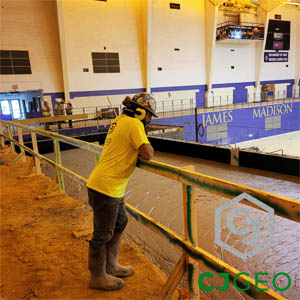
Sloped Pit Lightweight Backfill
The Job This sloped pit lightweight backfill project is located in Western Virginia, at James Mad...
-

Low Level Outfall Abandonment
The Job This low level outfall abandonment grouting project is located in New Jersey. The Round V...
-

30k CY Lightweight Embankment
The Job As part of the redevelopment of the Sparrows Point industrial area of Baltimore, three br...
-

Georgia Annular Space Grouting
The Job This Georgia annular space grouting project is located in Athens, Georgia. The project in...
-

Tennessee Annular Space Grouting
The Job This Tennessee annular space grouting project is located in Brentwood. Brentwood is part ...
-

Lightweight Tank Foundation
The Job This lightweight tank foundation installation project is located in Baltimore, Maryland. ...
-

Power Station Pipe Abandonment
The Job This power station pipe abandonment project is between Richmond & Lynchburg, Virginia...
-

Utility Tunnel Abandonment
The Job This utility tunnel abandonment project is located in Wilmington, Delaware. Approximately...
-

Rising Mains 48″ Abandonments
The Job This Pittsburgh pipe abandonment project is located within the city of Pittsburgh, Pennsy...
-

SW Florida Annular Space Grouting
The Job This Florida annular space grouting project by CJGeo is located in For Myers, Florida. Th...
-

9.5kCY MSE wall backfill
The Job This MSE wall backfill project is located on Interstate 95 north of Baltimore, Maryland. ...
-

New York Annular Space Grouting
The Job This New York annular space grouting work is part of the Bay Park Conveyance Project. The...
-

Dairy Branch Annular Space Grouting
The Job CJGeo’s Dairy Branch annular space grouting project is located in North Carolina. C...
-

Neuse River Annular Grouting
The Job This annular grouting project is located in North Carolina. The City of Raleigh’s N...
-

Grain Silo Tunnel Backfilling
The Job This grain silo tunnel backfilling project is located in Tampa, Florida. As part of a red...
-

24″ Water Main Abandonment
The Job This 24″ water main abandonment project is located in Fairfax, Virginia. Fairfax Co...
-

Union County Annular Space Grouting
The Job This Union County annular space grouting project is located in North Carolina, near Charl...
-

8″ Pipe Abandonment
The Job This 8″ pipe abandonment project is located outside of Washington, DC. As part of c...
-

Hollow Abutment Filling
The Job This hollow abutment filling project is located in Buckland, Massachusetts. Buckland is a...
-

Lightweight Plaza Fill
The Job Lightweight plaza fill for a private age restricted high rise new build in Tysons Corner,...
-

Garden State Parkway grouting
The Job This Garden State Parkway grouting project is located near Middletown, New Jersey. As par...
-

66″ Water Main Abandonment
The Job This 66″ water main abandonment is part of the The Purple Line’s construction...
-

Industrial Basement Abandonment
The Job This industrial basement abandonment project is located in Southside, Virginia. As part o...
-

Atlanta cellular concrete
The Job This Atlanta cellular concrete installation is part of Atlanta Watershed Management’...
-

Veranda St Bridge Infill
The Job This bridge infill work was part of Maine DOT’s Veranda Street Bridge Replacement P...
-

Nashville Basement Backfill
The Job Nashville Yards is a block-wide new build project in downtown Nashville, Tennessee. With ...
-

Savannah Tunnel Abandonment
The Job This Savannah tunnel abandonment job is part of the JW Marriott Plant Riverside conversio...
-

I-64 Soundwall Backfill
The Job VDOT’s I-64 widening project is a multi-phase widening of Interstate 64 between Ric...
-

Steam Tunnel Lightweight Backfill
The Job This steam tunnel lightweight backfill project is located at Western Carolina University,...
-

Nashville Basement Abandonment
The Job This Nashville basement abandonment project is located along Church Street, in downtown N...
-

Lightweight Pipe Backfill
The Job This lightweight pipe backfill is part of the City of Alexandria’s RiverRenew proje...
-

Dumfries Pipe Abandonment
The Job This utility relocation included abandonment grouting as part of a VDOT roadway reconstru...
-

Parsippany Annular Space Grouting
The Job This Parsippany annular space grouting project is part of a microtunneled installation of...
-

BNA Culvert Abandonment
The Job As part of a Nashville International Airport’s BNA Vision project, several hundred ...
-

Lightweight Temporary Dam Foundation
The Job This lightweight temporary dam foundation installation was part of flood proofing project...
-

Pit Fill With Lightweight Flowable Fill
The Job An abandoned water treatment plant at a federal facility was being rehabilitated and brou...
-

Nashville Annular Space Grouting
The Job This Nashville annular space grouting project is located at Nashville’s Central WWT...
-

Texas Annular Space Grouting
The Job This Texas annular space grouting project is located in Lockhart, Texas. It is a 42″...
-

Michigan Water Main Abandonment
The Job This Michigan water main abandonment project is located in Saginaw, Michigan. It is a 290...
-

Pennsylvania Pipe Abandonment
The Job This Pennsylvania pipe abandonment project is located at a drinking water reservoir near ...
-

New Jersey Lightweight Fill
The Job This New Jersey lightweight fill project is located in Secaucus, New Jersey. It’s p...
-

New Jersey Pipe Abandonment
The Job This New Jersey pipe abandonment project is located in northern New Jersey. First, the ge...
-

Michigan Pipe Abandonment
The Job This Michigan pipe abandonment project is located in Grand Rapids, Michigan. As part of t...
-

Detroit Michigan Annular Space Grouting
The Job This Detroit Michigan annular space grouting project is located near Van Dyke Avenue &...
-

Lightweight MSE Wall Backfill
The Job This MSE wall lightweight backfill project is located near Chester, Virginia. The MSE wal...
-

Low Density Bridge Underfill
The Job This low density bridge underfill project is located on Interstate 95, in Philadelphia, P...
-

Basement Wall Load Reducing Fill
The Job This basement wall load reducing fill project is located in Lexington, Virginia, on a cam...
-

Virginia Lightweight Fill
The Job This Virginia lightweight fill installation is located Norfolk, Virginia. The placement i...
-

Virginia Pipe Abandonment
The Job This Virginia pipe abandonment project is located in Norfolk, Virginia. It is part of the...
-

North Carolina Abandonment Grouting
The Job This North Carolina pipe abandonment project is located in Raleigh, North Carolina. It is...
-

HDPE Annular Grouting
The Job This HDPE annular grouting project is located in Portsmouth, Virginia. The project owner ...
-

Tunnel Adit Fill
The Job This tunnel adit fill project is part of the Purple Line project outside of Washington, D...
-

Railroad Bore Annular Space Grouting
The Job This railroad bore annular space grouting project is located in Winchester, Virginia. As ...
-

Electric Bore Annular Space Grouting
The Job This electric bore annular space grouting project is located in Norfolk, Virginia. As par...
-

North Carolina Annular Grouting
The Job This North Carolina annular grouting project is located in Havelock, North Carolina. Have...
-

Underground Storage Tank Fill
The Job This underground storage tank fill project by CJGeo is located at a food manufacturing fa...
-

New York Pipe Abandonment
The Job This New York pipe abandonment project is located in Newburgh, New York. Newburgh is on t...
-

Indiana Pipe Abandonment
The Job This Indiana pipe abandonment project is located in Anderson. Anderson is in central Indi...
-

Ohio Annular Space Grouting
The Job This Ohio annular space grouting project is located in Akron. It is part of the Northside...
-

NCDOT pipe abandonment
The Job This NCDOT pipe abandonment project is located outside of Wilmington, North Carolina. It ...
-

NCDOT abandonment grouting
The Job This NCDOT abandonment grouting project is located outside of Chapel Hill, North Carolina...
-

USACE Pipe Abandonment
The Job This USACE pipe abandonment project is located in Muncie, Indiana. The project was part o...
-

Hobas Pipe Backfilling
The Job This Hobas pipe backfilling project is located in Baltimore, Maryland. It is one of the l...
-

T Wall Lightweight Backfill
The Job This T wall lightweight backfill project is located in Boston, Massachusetts. The bridge ...
-

Lightweight Fill Over Waterline
The Job This lightweight fill over waterline project is located north of Baltimore, Maryland, in ...
-

NYC Cellular Concrete
The Job This NYC cellular concrete project is located at the William McCray Playground in Manhatt...